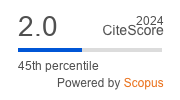What drives the effectiveness of Proof-of-Concept programmes?
DOI:
https://doi.org/10.23726/cij.2025.1743Keywords:
Proof-of-Concept programmes, PoC, microfoundations, Qualitative Comparative Analysis, fsQCA, Technological maturityAbstract
This paper examines the mechanisms underlying the effectiveness of Proof-of-Concept programmes (PoCs) in advancing the technological maturity of research inventions. We developed a conceptual framework at the intersection of dynamic capabilities and academic entrepreneurship literature and conceptualized how four relevant mechanisms guide successful technology valorisation through PoCs at different levels: sensing and seizing capacities of research teams, characteristics of the external network – specifically, timing of contact and geographical location – and the nature of the research invention, distinguishing between science-based and engineering-based inventions. Using a sample of 94 PoC projects, we adopted a microfoundational perspective and applied fuzzy-set Qualitative Comparative Analysis to understand whether and how different mechanisms and their interplay contribute to the effectiveness of PoC projects. Our analysis revealed that the combinations of these mechanisms depend on the nature of inventions. Our results contribute to the PoC literature and provide practical implications for policymakers and decision-makers, TTOs and research teams.
References
Autio, E. (1997). New, technology-based firms in innovation networks symplectic and generative impacts. Research Policy, 26(3), 263–281. https://doi.org/10.1016/S0048-7333(96)00906-7
Bailey, A. G., Reingold, B. M., Johnson, J. D., & O’Connor, A. C. (2025). Paths towards commercialization: Evidence from NIH proof of concept centers. The Journal of Technology Transfer. https://doi.org/10.1007/s10961-025-10187-w
Baglieri, D., & Lorenzoni, G. (2014). Closing the distance between academia and market: Experimentation and user entrepreneurial processes. The Journal of Technology Transfer, 39(1), 52–74. https://doi.org/10.1007/s10961-012-9274-7
Battaglia, D., Paolucci, E., & Ughetto, E. (2021a). Opening the black box of university Proof-of-Concept programs: Project and team-based determinants of research commercialization outcomes. Technovation, 108, 102334. https://doi.org/10.1016/j.technovation.2021.102334
Battaglia, D., Paolucci, E., & Ughetto, E. (2021b). The role of Proof-of-Concept programs in facilitating the commercialization of research-based inventions. Research Policy, 50(6), 104268. https://doi.org/10.1016/j.respol.2021.104268
Boschma, R. (2005). Proximity and Innovation: A Critical Assessment. Regional Studies, 39(1), 61–74. https://doi.org/10.1080/0034340052000320887
Bradley, S. R., Hayter, C. S., & Link, A. N. (2013). Proof of Concept Centers in the United States: An exploratory look. The Journal of Technology Transfer, 38(4), 349–381. https://doi.org/10.1007/s10961-013-9309-8
Contractor, F., Foss, N. J., Kundu, S., & Lahiri, S. (2019). Viewing global strategy through a microfoundations lens. Global Strategy Journal, 9(1), 3–18. https://doi.org/10.1002/gsj.1329
D’Este, P., Guy, F., & Iammarino, S. (2013). Shaping the formation of university-industry research collaborations: What type of proximity does really matter? Journal of Economic Geography, 13(4), 537–558. https://doi.org/10.1093/jeg/lbs010
Felin, T., Foss, N. J., & Ployhart, R. E. (2015). The Microfoundations Movement in Strategy and Organization Theory. Academy of Management Annals, 9(1), 575–632. https://doi.org/10.5465/19416520.2015.1007651
Greckhamer, T., Misangyi, V. F., Elms, H., & Lacey, R. (2008). Using Qualitative Comparative Analysis in Strategic Management Research: An Examination of Combinations of Industry, Corporate, and Business-Unit Effects. Organizational Research Methods, 11(4), 695–726. https://doi.org/10.1177/1094428107302907
Greckhamer, T., Misangyi, V. F., & Fiss, P. C. (2013). Chapter 3 The Two QCAs: From a Small-N to a Large-N Set Theoretic Approach. In P. C. Fiss, B. Cambré, & A. Marx (Eds.), Research in the Sociology of Organizations (Vol. 38, pp. 49–75). Emerald Group Publishing Limited. https://doi.org/10.1108/S0733-558X(2013)0000038007
Gulbranson, C. A., & Audretsch, D. B. (2008). Proof of concept centers: Accelerating the commercialization of university innovation. The Journal of Technology Transfer, 33(3), 249–258. https://doi.org/10.1007/s10961-008-9086-y
Hayter, C. S., & Link, A. N. (2015). On the economic impact of university proof of concept centers. The Journal of Technology Transfer, 40(1), 178–183. https://doi.org/10.1007/s10961-014-9369-4
Heaton, S., Siegel, D. S., & Teece, D. J. (2019). Universities and innovation ecosystems: A dynamic capabilities perspective. Industrial and Corporate Change, 28(4), 921–939. https://doi.org/10.1093/icc/dtz038
Hughes, A., & Kitson, M. (2012). Pathways to impact and the strategic role of universities: New evidence on the breadth and depth of university knowledge exchange in the UK and the factors constraining its development. Cambridge Journal of Economics, 36(3), 723–750. https://doi.org/10.1093/cje/bes017
Jensen, R., & Thursby, M. (2001). Proofs and prototypes for sale: The licensing of university inventions. American Economic Review, 91(1), 240–259.
Katila, R., & Ahuja, G. (2002). Something old, something new: A longitudinal study of search behavior and new product introduction. Academy of Management Journal, 45(6), 1183–1194.
Khan, O., Daddi, T., & Iraldo, F. (2019). Microfoundations of dynamic capabilities: Insights from circular economy business cases. Business Strategy and the Environment, 29(3), 1479–1493. https://doi.org/10.1002/bse.2447
Klessova, S., Engell, S., & Thomas, C. (2022). Assessment of the advancement of market-upstream innovations and of the performance of research and innovation projects. Technovation, 116, 102495. https://doi.org/10.1016/j.technovation.2022.102495
Klessova, S., Thomas, C., & Engell, S. (2020). Structuring inter-organizational R&D projects: Towards a better understanding of the project architecture as an interplay between activity coordination and knowledge integration. International Journal of Project Management, 38(5), 291–306. https://doi.org/10.1016/j.ijproman.2020.06.008
Kortus, L., & Gutmann, T. (2023). How do firms build dynamic capabilities to develop sustainable products? A multiple case study in the manufacturing industry. Journal of Cleaner Production, 415, 137887. https://doi.org/10.1016/j.jclepro.2023.137887
Kraus, S., Ribeiro-Soriano, D., & Schüssler, M. (2018). Fuzzy-set qualitative comparative analysis (fsQCA) in entrepreneurship and innovation research – the rise of a method. International Entrepreneurship and Management Journal, 14(1), 15–33. https://doi.org/10.1007/s11365-017-0461-8
Landry, R., Amara, N., & Ouimet, M. (2007). Determinants of knowledge transfer: Evidence from Canadian university researchers in natural sciences and engineering. The Journal of Technology Transfer, 32(6), 561–592. https://doi.org/10.1007/s10961-006-0017-5
Maia, C., & Claro, J. (2013). The role of a Proof of Concept Center in a university ecosystem: An exploratory study. The Journal of Technology Transfer, 38(5), 641–650. https://doi.org/10.1007/s10961-012-9246-y
Maietta, O. W. (2015). Determinants of university–firm R&D collaboration and its impact on innovation: A perspective from a low-tech industry. Research Policy, 44(7), 1341–1359. https://doi.org/10.1016/j.respol.2015.03.006
McAdam, M., McAdam, R., Galbraith, B., & Miller, K. (2010). An exploratory study of Principal Investigator roles in UK university Proof-of-Concept processes: An Absorptive Capacity perspective: An exploratory study of Principal Investigator roles in UK university Proof-of-Concept processes. R&D Management, 40(5), 455–473. https://doi.org/10.1111/j.1467-9310.2010.00619.x
McAdam, R., McAdam, M., & Brown, V. (2009). Proof of concept processes in UK university technology transfer: An absorptive capacity perspective. R&D Management, 39(2), 192–210. https://doi.org/10.1111/j.1467-9310.2008.00549.x
Mousavi, S., Bossink, B., & Van Vliet, M. (2019). Microfoundations of companies’ dynamic capabilities for environmentally sustainable innovation: Case study insights from high‐tech innovation in science‐based companies. Business Strategy and the Environment, 28(2), 366–387. https://doi.org/10.1002/bse.2255
Munari, F., Rasmussen, E., Toschi, L., & Villani, E. (2016). Determinants of the university technology transfer policy-mix: A cross-national analysis of gap-funding instruments. The Journal of Technology Transfer, 41(6), 1377–1405. https://doi.org/10.1007/s10961-015-9448-1
Munari, F., Sobrero, M., & Toschi, L. (2017). Financing technology transfer: Assessment of university-oriented proof-of-concept programmes. Technology Analysis & Strategic Management, 29(2), 233–246. https://doi.org/10.1080/09537325.2016.1241874
Munari, F., Sobrero, M., & Toschi, L. (2018). The university as a venture capitalist? Gap funding instruments for technology transfer. Technological Forecasting and Social Change, 127, 70–84. https://doi.org/10.1016/j.techfore.2017.07.024
Munari, F., & Toschi, L. (2021). The impact of public funding on science valorisation: An analysis of the ERC Proof-of-Concept Programme. Research Policy, 50(6), 104211. https://doi.org/10.1016/j.respol.2021.104211
Pappas, I. O., & Woodside, A. G. (2021). Fuzzy-set Qualitative Comparative Analysis (fsQCA): Guidelines for research practice in Information Systems and marketing. International Journal of Information Management, 58, 102310. https://doi.org/10.1016/j.ijinfomgt.2021.102310
Rhaiem, K., & Doloreux, D. (2024). Inbound open innovation in SMEs: A microfoundations perspective of dynamic capabilities. Technological Forecasting and Social Change, 199, 123048. https://doi.org/10.1016/j.techfore.2023.123048
Ragin, C.C. (2000). Fuzzy-Set Social Science. Chicago, IL: University of Chicago Press.
Ragin, C. C. (2007). Fuzzy sets: Calibration versus measurement. Methodology volume of Oxford handbooks of political science, 2.
Rasmussen, E. (2008). Government instruments to support the commercialization of university research: Lessons from Canada. Technovation, 28(8), 506–517. https://doi.org/10.1016/j.technovation.2007.12.002
Rasmussen, E., & Rice, M. P. (2012). A framework for government support mechanisms aimed at enhancing university technology transfer: The Norwegian case. International Journal of Technology Transfer and Commercialisation, 11(1/2), 1. https://doi.org/10.1504/IJTTC.2012.043934
Rasmussen, E., & Sørheim, R. (2012). How governments seek to bridge the financing gap for university spin-offs: Proof-of-concept, pre-seed, and seed funding. Technology Analysis & Strategic Management, 24(7), 663–678. https://doi.org/10.1080/09537325.2012.705119
Sandberg, E., & Hultberg, E. (2021). Dynamic capabilities for the scaling of circular business model initiatives in the fashion industry. Journal of Cleaner Production, 320, 128831. https://doi.org/10.1016/j.jclepro.2021.128831
Schneider, C. Q., & Wagemann, C. (2012). Set-Theoretic Methods for the Social Sciences: A Guide to Qualitative Comparative Analysis (1st ed.). Cambridge University Press. https://doi.org/10.1017/CBO9781139004244
Swamidass, P. M. (2013). University startups as a commercialization alternative: Lessons from three contrasting case studies. Journal of Technology Transfer, 38(6), 788–808. https://doi.org/10.1007/s10961-012-9267-6
Teece, D. J. (2007). Explicating dynamic capabilities: The nature and microfoundations of (sustainable) enterprise performance. Strategic Management Journal, 28(13), 1319–1350. https://doi.org/10.1002/smj.640
Teece, D. J. (2020). Hand in Glove: Open Innovation and the Dynamic Capabilities Framework. Strategic Management Review, 1(2), 233–253. https://doi.org/10.1561/111.00000010
Teece, D., Peteraf, M., & Leih, S. (2016). Dynamic Capabilities and Organizational Agility: Risk, Uncertainty, and Strategy in the Innovation Economy. California Management Review, 58(4), 13–35. https://doi.org/10.1525/cmr.2016.58.4.13
Yuan, C., Li, Y., Vlas, C. O., & Peng, M. W. (2018). Dynamic capabilities, subnational environment, and university technology transfer. Strategic Organization, 16(1), 35–60. https://doi.org/10.1177/1476127016667969
Warner, K. S. R., & Wäger, M. (2019). Building dynamic capabilities for digital transformation: An ongoing process of strategic renewal. Long Range Planning, 52(3), 326–349. https://doi.org/10.1016/j.lrp.2018.12.001
Zollo, M., & Winter, S. G. (2002). Deliberate Learning and the Evolution of Dynamic Capabilities. Organization Science, 13(3), 339–351. https://doi.org/10.1287/orsc.13.3.339.2780
Downloads
Published
How to Cite
License
Copyright (c) 2025 Fabiana Resio, Emilio Paolucci, Cristina Marullo

This work is licensed under a Creative Commons Attribution 4.0 International License.
Authors who publish with this journal agree to the following terms:
- Authors retain copyright and grant the journal right of first publication with the work simultaneously licensed under a Creative Commons Attribution License that allows others to share the work with an acknowledgement of the work's authorship and initial publication in this journal.
- Authors are able to enter into separate, additional contractual arrangements for the non-exclusive distribution of the journal's published version of the work (e.g., post it to an institutional repository or publish it in a book), with an acknowledgement of its initial publication in this journal.
- Authors are permitted and encouraged to post their work online (e.g., in institutional repositories or on their website) prior to and during the submission process, as it can lead to productive exchanges, as well as earlier and greater citation of published work (See The Effect of Open Access).


